updated 2022-03-05
Sometimes I don’t seek out a project. Rather, sometimes projects just find me . . . .
That’s what happened with Old School. This rifle was a 1980’s Remington Model 700 in 243 Winchester. This was actually one of my dad’s rifles from back in the day. When I stole indefinitely borrowed the rifle it was in good shape, aside from needing a little oil and a quick bore cleaning.
The rifle shot well at the range: with factory ammo groups were a consistent 1-1/4″ at 100 yards – much better than needed for conventional hunting. The clean metal, excellent condition of the bore, and medium-contour barrel were all contributing to good accuracy.
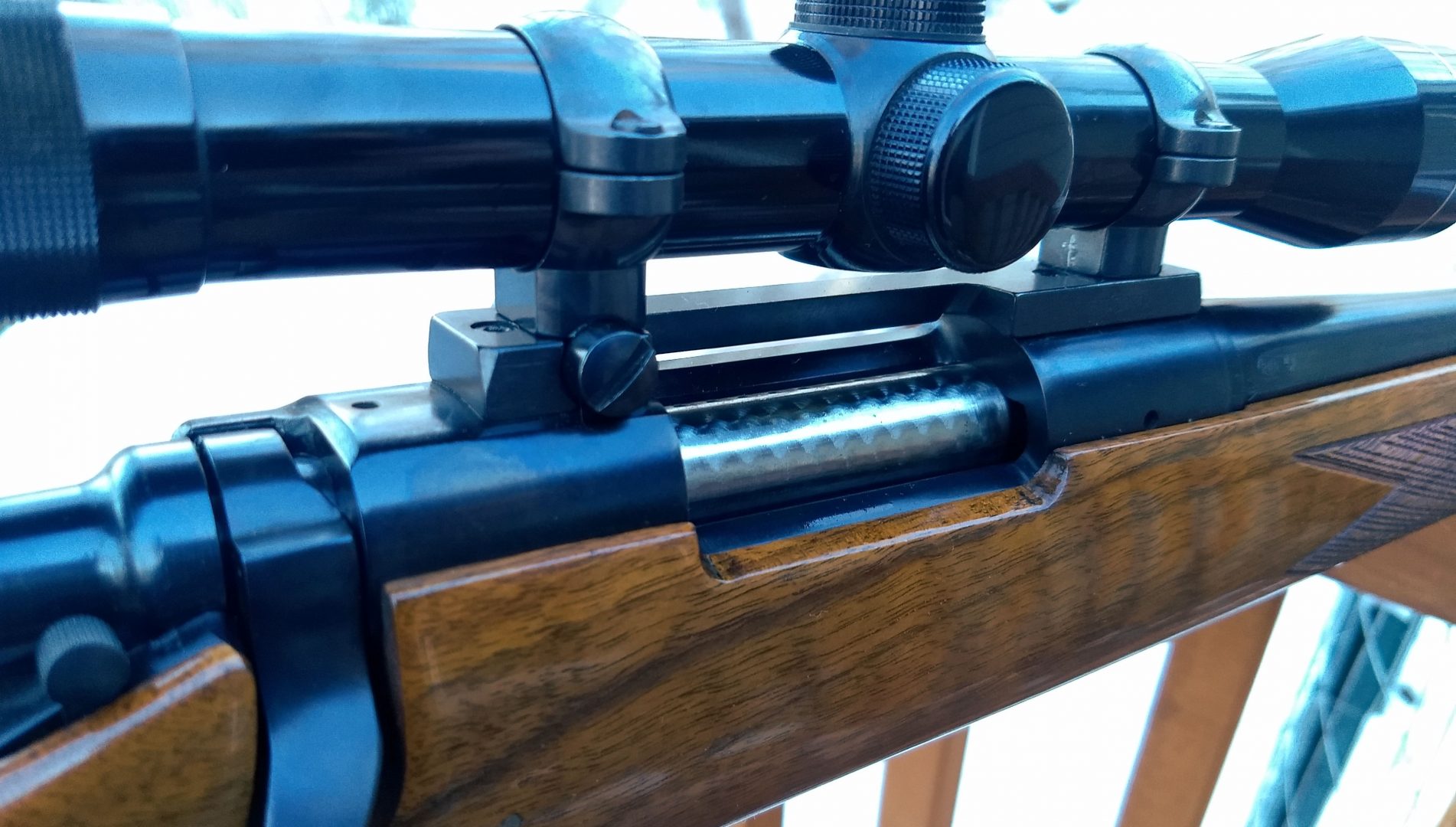
I was planning to take up hunting, and although a 243 is a little light for most Alaskan big game, it would be perfect for lighter critters like Sitka black-tailed deer. But given that I’m not one to leave things alone I almost immediately started seeing ways to make a good thing better:
- The stock is beautiful, with subtle figure in the grain and a finish in excellent condition. But the bedding of the action left much to be desired.
- Similarly, the stock itself could become a liability with the extreme temperature and moisture swings found in Alaska. Warpage does not help anything.
- Part of the stock’s charm was it’s old school design: white line spacers, cut checkering, and a solid butt plate. But even as stylish as the butt plate was, it made the light-recoiling 243 round kick like a magnum.
- Modern rifles almost always incorporate a free-floating barrel to prevent shifts in point of aim. This one had inconsistent contact all along the barrel channel.
As I developed the plan for how to improve the rifle I kept in mind one overarching goal: to keep the outward appearance as unchanged as possible. In an age of kevlar stocks, anodized aluminum actions, and picatinny rail hand guards there is still a place for a classic design of walnut, cut checkering, and blued steel.

The final plan for the rifle was as follows:
- Deep-clean everything, re-oil, and check for issues.
- Polish the bore to reduce fouling and ease cleaning.
- Replace the plastic butt plate with a rubber one to cut down on felt recoil.
- The bedding would be addressed in two steps:
- First, the action screw holes would be opened up and aluminum pillars installed.
- Second, the rifle would be glass bedded along the full length of the stock: This would seal the inside as well as reinforce the wood.
- A new scope would be installed with improved optics.
The deep-cleaning and mechanical checks went without issues. The rifle was in good shape and so a little stoning of the trigger was all I did to the action. The trigger pull was not reduced, but the smoothness was improved.
Bore polishing was also straightforward. I polish every barrel I own with JB bore polish. It reduces the micro texture of the barrel and leaves a much smoother finish that in a stock factory rifle.
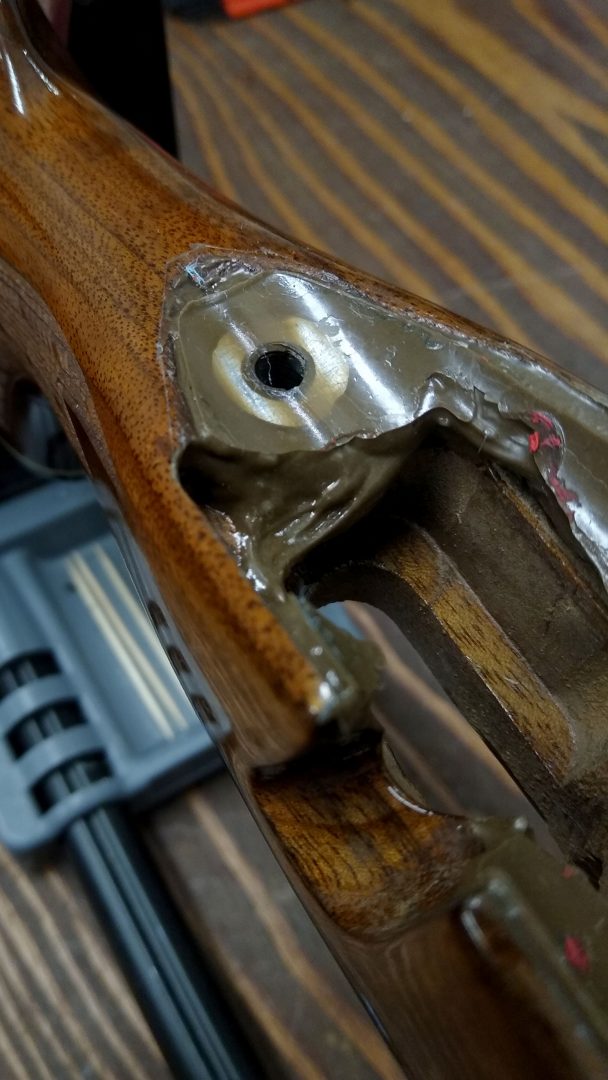
With the basic parts of the project done it was time to really get dirty and start on the bedding. I opened up the action screw holes holes with a dremel and wood carving bit, being careful to keep the holes aligned.
The next step was to cut the pillars to the correct height, being mindful of the curve on the top of the pillars which have to match the curve on the bottom of the receiver. Everything then received a few coats of release agent so that the epoxy would only stick to what it was supposed to.
With the preparation all done, everything was reassembled, espoxy was applied to the stock and pillars, and everything was reassembled. The recoil lug served to re-center the action in its original position.
After the epoxy cured I removed the action and checked that the pillars had set properly. With them in place they would serve as a new reference for the action to sit on, after the stock was ground out to remove all wood to metal contact.
I removed an extra amount of wood from the forend and plastic tip; that area needed room for both a layer of epoxy to seal the stock as well as an air space to keep the barrel free-floating. In preparation for bedding I added multiple layers of tape to the bottom of the barrel. Once removed, the tape would leave the desired free floating gap.
With the epoxy mixed, screw holes plugged with clay, and release agent applied again, it was time to bed the action. I mixed the epoxy, spread it inside the barrel channel, and seated the action into the goo.
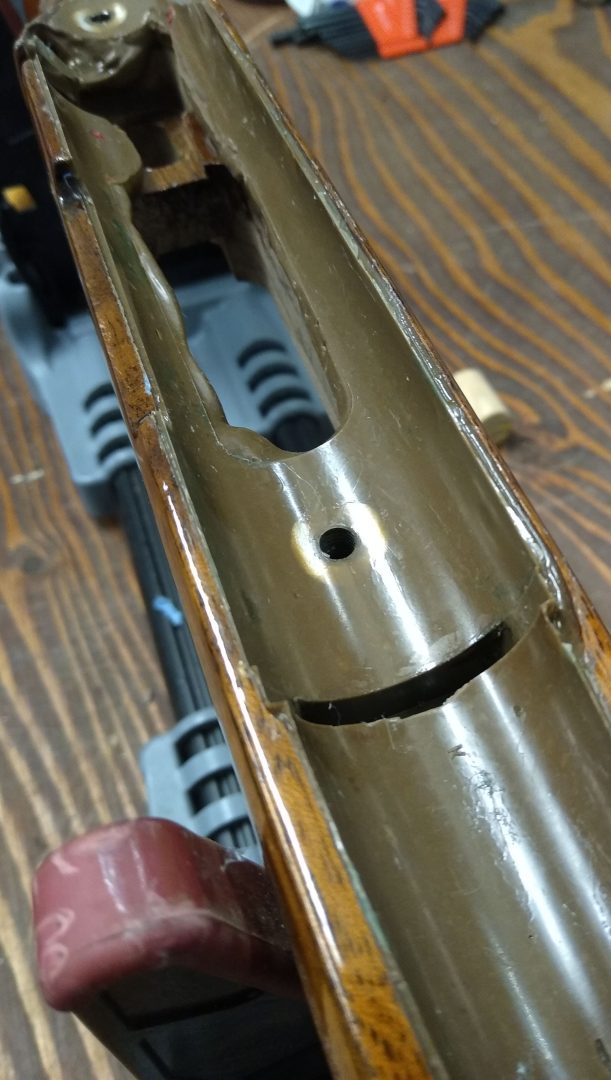
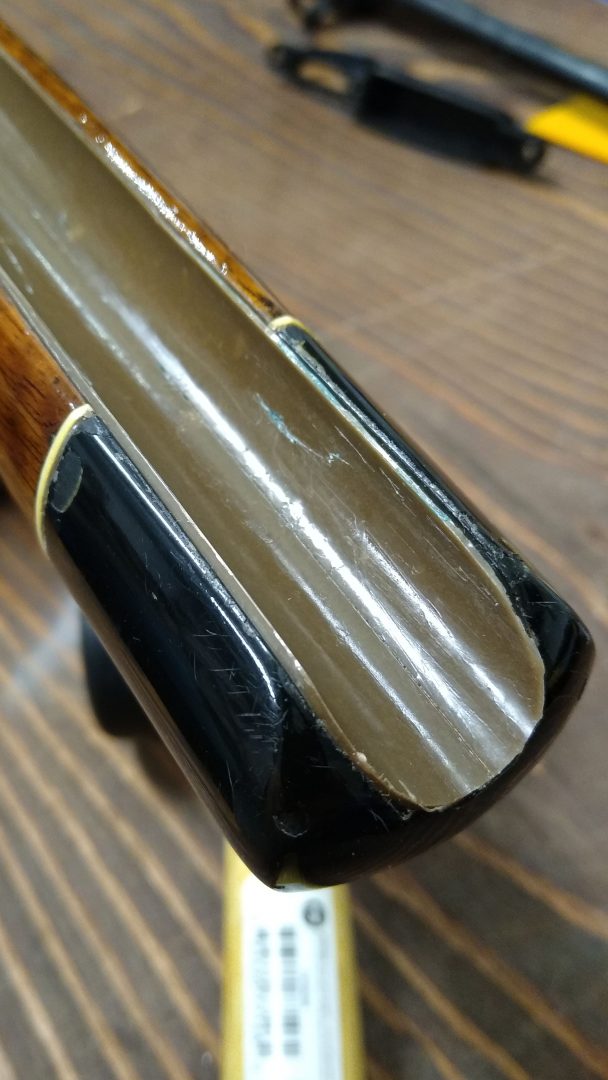
The glass bedding turned out great. The preparation really paid off: making sure there were no bubbles in the epoxy before seating the rifle, roughing up the texture of the wood to ensure adhesion, and taping or filling with clay any areas that had to remain free of epoxy. One area I had concern with was the forend cap. In classic 1980’s style the forend is made of plastic, to which epoxies often do not adhere.
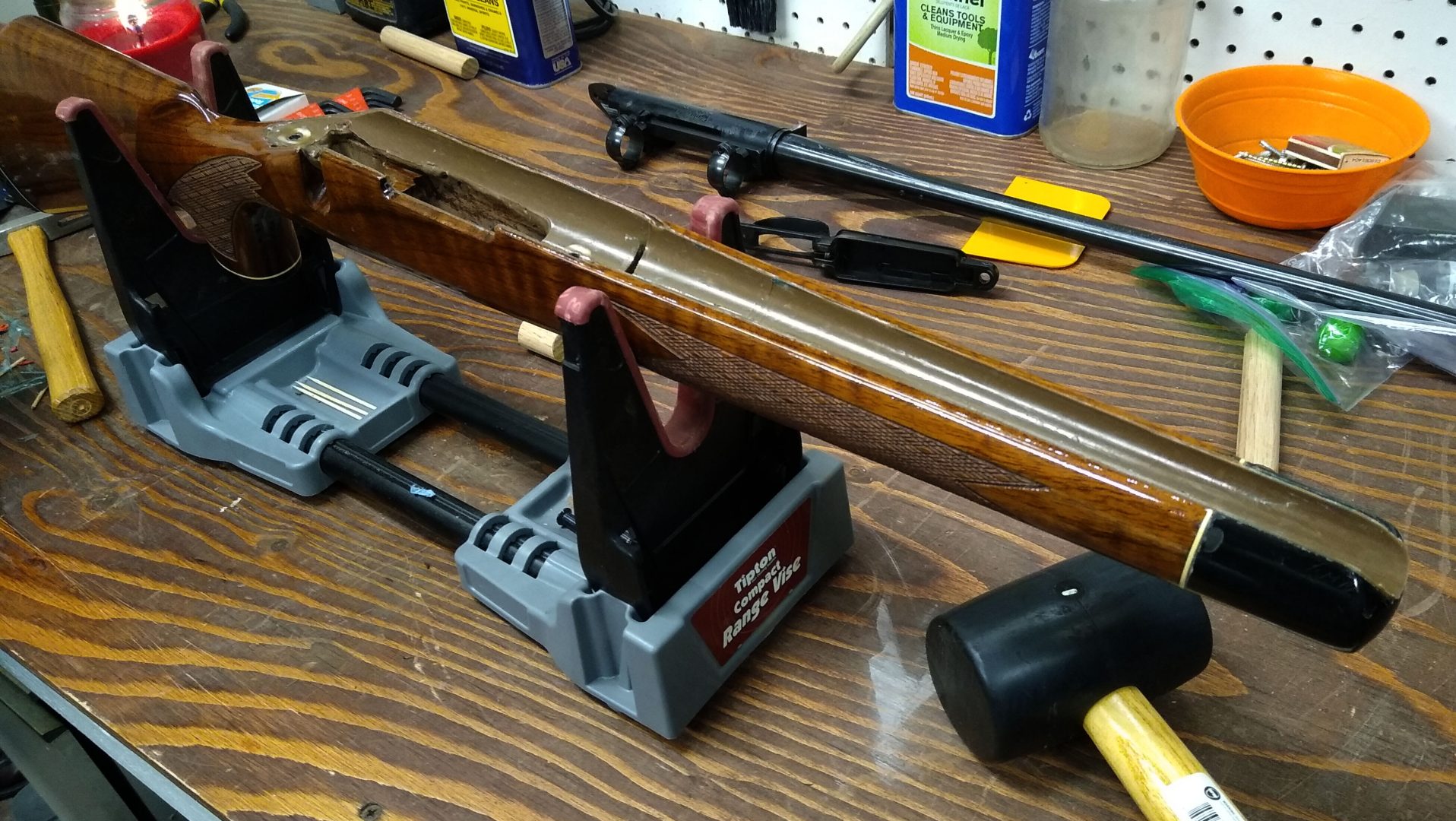
Everything was reassembled, tested for safety, and taken to the range. With the same factory ammo as I used before the test, groups shrank to about 3/4″ at 100 yards. After further load testing I came up with reloads that hold 1-1/2″ groups at 200 yards. Not bad for a 30 year old factory rifle.

As a final step I removed the plastic butt plate and replaced it with a 1″ Pachmayr recoil pad. The 1″ thickness would usually be considered a little overkill for a 243 Winchester, but I love it. The vented pad takes the felt recoil down to nearly nothing.

The end result exceeded all my hopes. The rifle kept it’s classic appearance, but it was more accurate, stronger, and more weather-resistant than before. What would have been a nice, but forgettable rifle is now one of my most accurate guns. You can’t ask for more than that.

